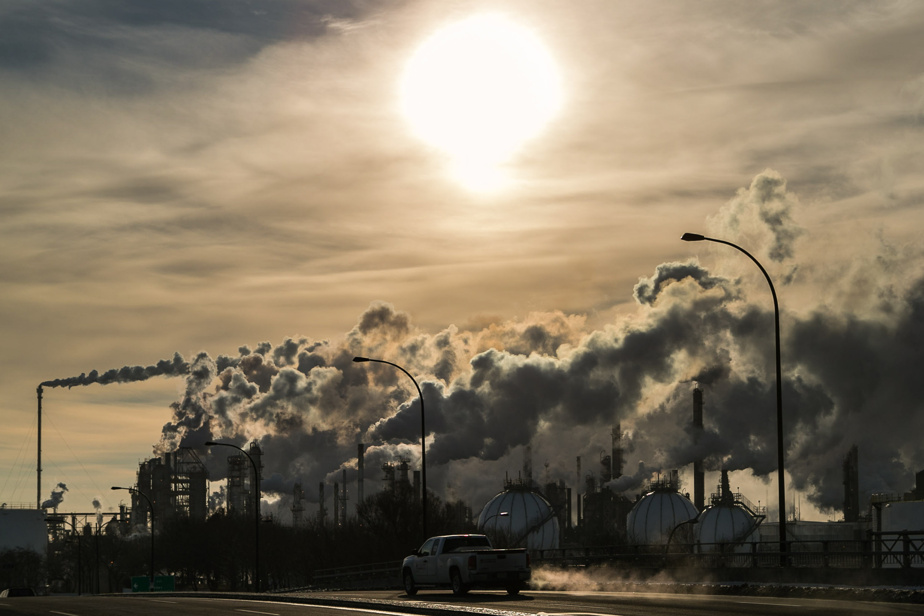Do you have questions about our editorials? Questions about hot topics in the news? Each week, the editorial team responds to readers of The Press.
Quebec has set GHG reduction targets for 2030 and 2050, but several articles report that we could miss them. I’m trying to figure out how that’s possible when the province has a cap and trade system in place that covers 80% of our emissions. Shouldn’t our objectives be reflected in the number of emission permits granted and therefore “force” us to reach our targets?
Alexandre Courchesne
In principle, Mr Courchesne, you are right. The carbon market should bring us very close to our climate targets.
However, it is not the case.
Quebec has promised to reduce its emissions by 37.5% in 2030 compared to 1990 levels. At the latest, the reduction was only 13.2%. In addition, this figure is based on the year 2020, when a good part of the economy was paralyzed by the pandemic. It’s a safe bet that our emissions have already gone up since then.
The carbon market, also known as the “emissions cap and trade system”, is a central element of Québec’s climate strategy. It obliges subject GHG emitters to obtain emission rights to release GHGs into the atmosphere.
The market gradually lowers these fees over the years – the “ceiling is said to drop”. Fewer rights should mean fewer emissions.
However, there are several reasons why this market does not automatically lead us to our targets.
Alain Webster, an expert in environmental economics at the University of Sherbrooke, first recalls that the carbon market is common between Quebec and California and that reductions are made where it is cheapest. In 2020, Quebec companies bought 11.4 million emission rights in California. This is the equivalent of 11.4 megatons of CO2.
Clearly, part of the reductions are not reflected in our balance sheet because they are made elsewhere. Last December, the Government of Quebec published a document which states that by including the emission rights purchased in California by Quebec companies, the province shows a reduction of 26.6% below 1990 levels rather than 13 .2% 1.
Some experts, including Pierre-Olivier Pineau, professor at HEC Montreal, however cast doubt on these figures. They dispute the thesis that each emission right really corresponds to a reduction of one tonne of CO2.
To understand this, we need to talk about a second aspect: the surplus of emission rights.
During the first years of the carbon market, governments set very high ceilings and granted a lot of emission rights to companies subject to it.
Result: companies have put emission rights in their pockets. Today, governments restrict rights. In principle, companies should run out of rights, which would force them to reduce their emissions. But they rather bring out their old rights to cover their pollution.
Another reason why we cannot rely solely on the carbon market to achieve our targets is that it does not cover all of Quebec’s emissions.
GHGs generated by agriculture and waste, in particular, escape this.
However, the covered sectors are not asked to provide more than their share of effort to compensate for the fact that other sectors are not covered. They are asked to provide their share, period.
This leaves a proportion of our emissions that must be reduced by policies other than the carbon market. Quebec claims that the carbon market covers 80% of Quebec emissions, which would leave a hole of 20%. Expert Pierre-Olivier Pineau calculates instead that the market covers 72% of emissions, leaving a hole of 28%. It’s starting to get big.
Finally, questions surround so-called “compensatory” credits. Companies subject to this can meet part of their obligations by purchasing these credits generated in sectors not covered, such as agriculture, forestry or the capture of refrigerant gases.
These offset credits are associated with real reductions… but in sectors that must also reduce their emissions. “If a ton is reduced in agriculture and generates an offset credit which allows a ton in transport to be emitted, there is, overall, no reduction”, illustrates Pierre-Olivier Pineau.
Offset credits also reduce demand for “real” emission rights, exacerbating surpluses.
The good news is that the governments of Quebec and California are aware of the issues surrounding the carbon market and have announced their intention to discuss them this year. We just have to hope for quick actions.
